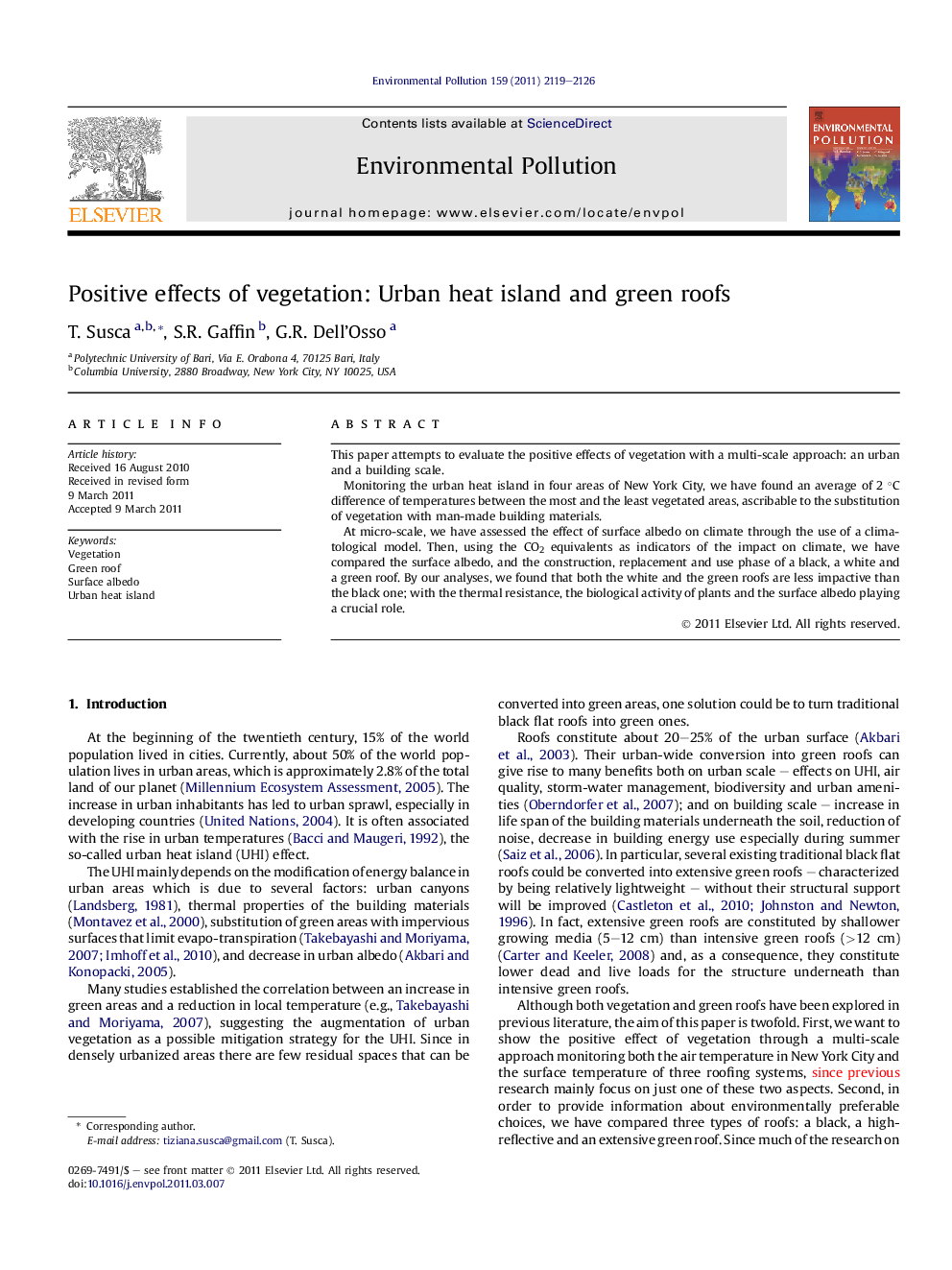| Article ID | Journal | Published Year | Pages | File Type |
|---|---|---|---|---|
| 4425206 | Environmental Pollution | 2011 | 8 Pages |
This paper attempts to evaluate the positive effects of vegetation with a multi-scale approach: an urban and a building scale.Monitoring the urban heat island in four areas of New York City, we have found an average of 2 °C difference of temperatures between the most and the least vegetated areas, ascribable to the substitution of vegetation with man-made building materials.At micro-scale, we have assessed the effect of surface albedo on climate through the use of a climatological model. Then, using the CO2 equivalents as indicators of the impact on climate, we have compared the surface albedo, and the construction, replacement and use phase of a black, a white and a green roof. By our analyses, we found that both the white and the green roofs are less impactive than the black one; with the thermal resistance, the biological activity of plants and the surface albedo playing a crucial role.
► The local morphology and the scarcity of vegetation in NYC core determines its UHI. ► We introduce the evaluation of the effects of the surface albedo on climate change. ► We use it to compare a black roof with a white and a green one. ► Surface albedo has a crucial role in the evaluation of the environmental loads of the roofs. ► Vegetation has positive effects on both the urban and the building scale.
